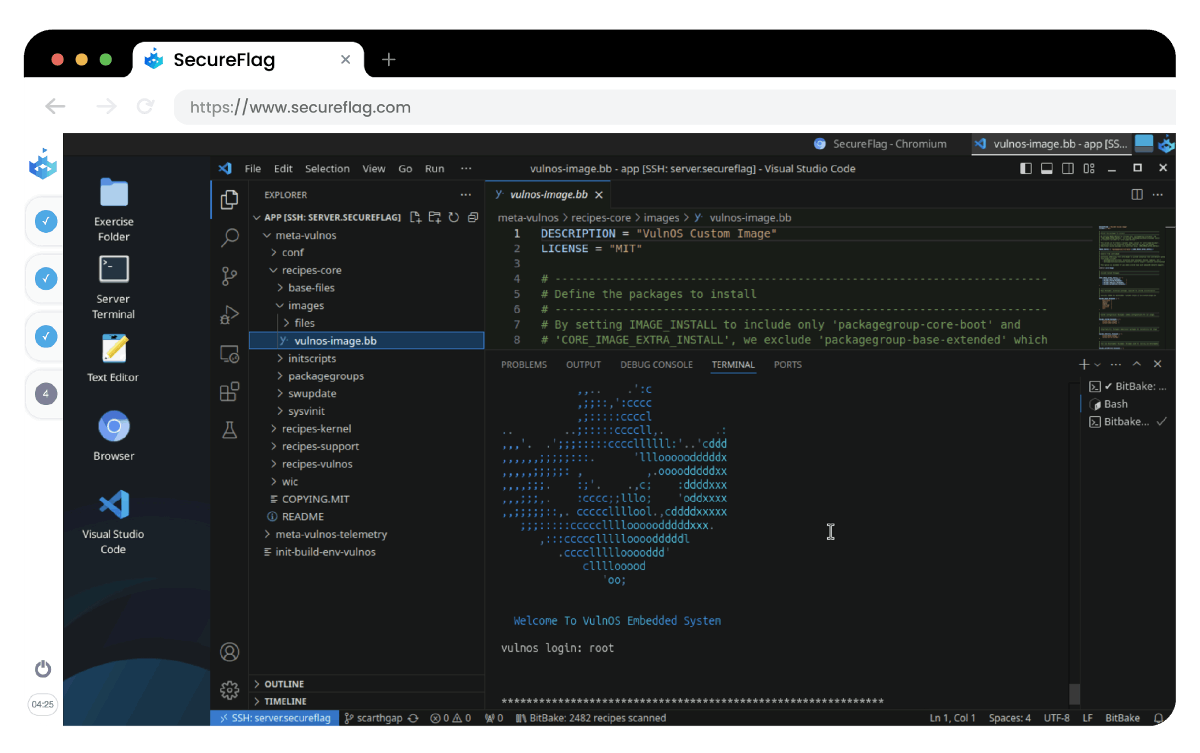Your car’s control system, medical devices, smart fridge, and other IoT devices stay connected and functional because they are all powered by embedded systems. This even includes industrial machinery. But keeping them secure is another story!
SecureFlag is now offering new embedded Linux labs to help developers build secure environments with hands-on training. Get ready to customize and strengthen your systems.

The Need for Strong Embedded Security
More medical institutions, telcos, and energy companies are using embedded solutions, and cybercriminals are always looking for ways to exploit them.
Many embedded systems, such as IoT devices, are connected to the internet or other networks, like smart home gadgets. While connectivity offers significant benefits, it also creates opportunities for hackers. For example, one of the most common exploits in embedded systems is hacking consumer electronics.
SecureFlag’s embedded labs help developers avoid potential threats by making security an integral part of the development process.
What Are Embedded Systems?
So, what do we mean by embedded systems? Basically, an embedded system is a specialized computer that’s built to perform a specific task within a larger system.
Unlike general-purpose computers, these are fine-tuned for specific jobs, such as controlling industrial robots, running a smart thermostat, or managing software inside a car. They’re used everywhere these days.
The Challenges of Securing Embedded Systems
Embedded systems have changed quite a lot over the years. From simple devices with basic features and functionality, to pretty much full-blown computers with many capabilities, means more potential entry points for hackers.
As these systems are now quite complicated, securing them becomes complex, especially as they’re connected to networks or other devices. Traditional security measures aren’t enough to keep up with the growing number of features and risks.
Patching regularly and using complicated authentication methods can also be problematic, making embedded systems more open to attacks. Plus, once deployed, they often stay in the field for years.
These challenges are reduced by making sure security is built into the system from the very beginning, so it stays protected long after deployment. That’s precisely what SecureFlag’s labs train you to do.
Why Use Linux Solutions?
Environments like OpenEmbedded and Yocto allow developers to build customized Linux distributions, picking only the components they need for their embedded systems. It keeps things more streamlined and secure by controlling the complexity of the operating system. This kind of control is essential for industries with strict security and performance demands.
Who Benefits From SecureFlag’s Embedded Labs?
Industries like automotive, industrial automation, IoT, and consumer electronics rely on Linux-based embedded systems. Whether they’re used in vehicles, factories, or connected devices, custom distributions allow developers to create systems tailored to their specific needs. SecureFlag’s labs help them do just that while making sure security is never an afterthought.
What Makes SecureFlag’s Labs Different?
For one thing, our labs place focus on hands-on learning. Developers go step by step through setting up secure environments and practicing real-world security measures. Whether you’re new to embedded systems or have some experience, these labs will help you improve your skills and build more secure embedded systems.
A lab might have a misconfigured Yocto setup that leaves a system exposed. An attacker could log in without a password if a setting allows unrestricted access through the serial port. The challenge? Identify the vulnerability and secure the system before it becomes a risk.
These kinds of hands-on exercises give developers the skills to find and fix vulnerabilities before they become real-world threats.

Protect Embedded Systems With SecureFlag
At SecureFlag, we know that securing embedded systems can be challenging at times—so why not practice in a place built for it? Our labs let developers experiment, break, and fix things in a safe environment. Developers learn to integrate security at every step to build embedded systems that are not just functional, but can also protect against cyberattacks. Less theory, more action!


